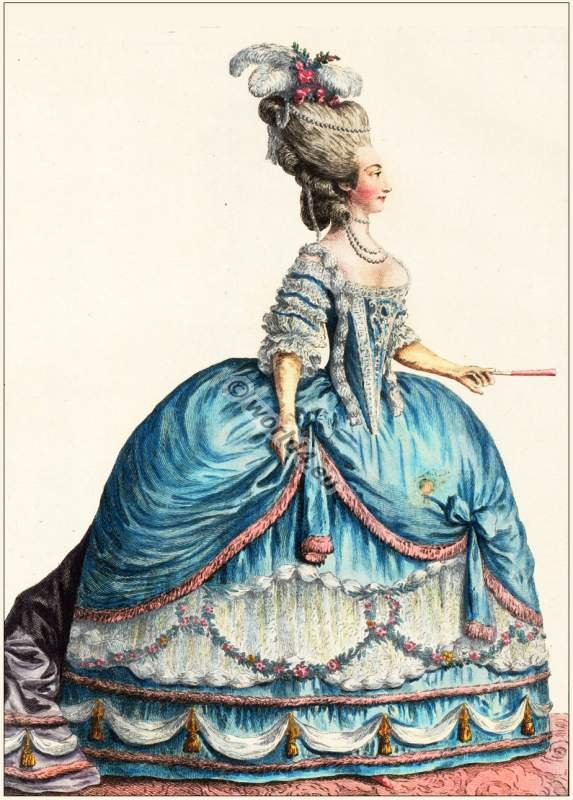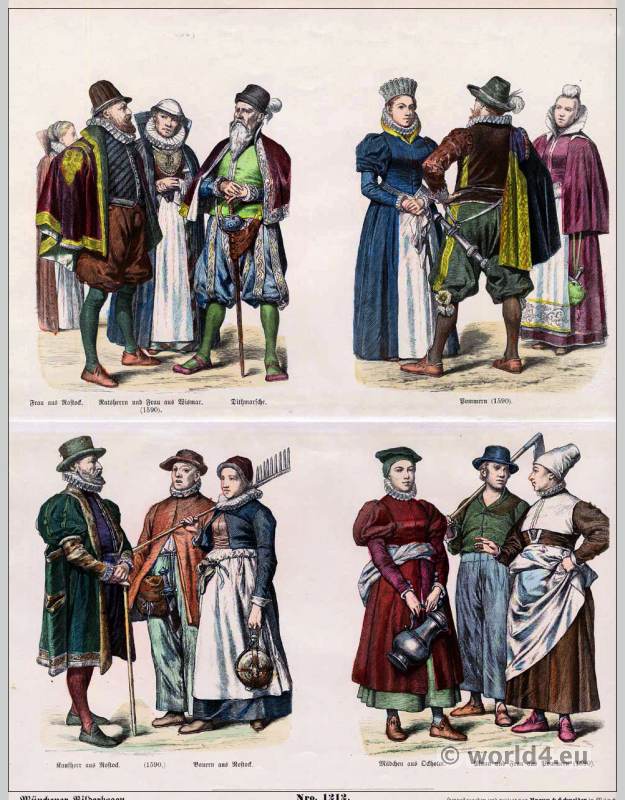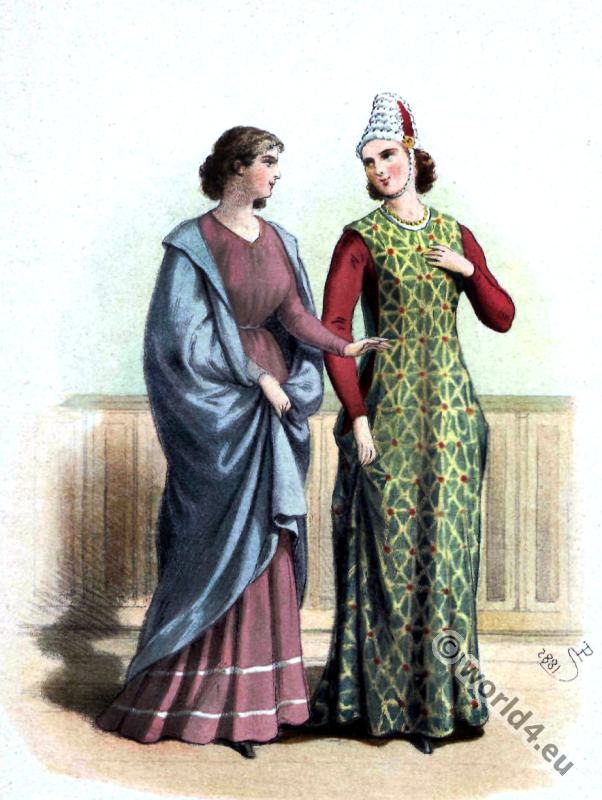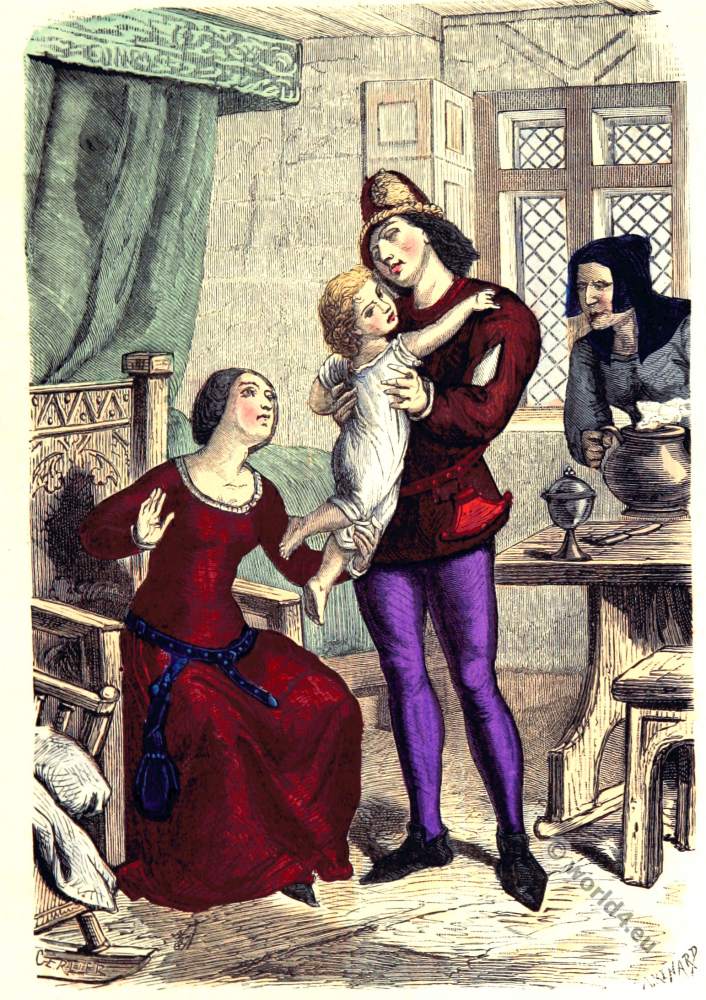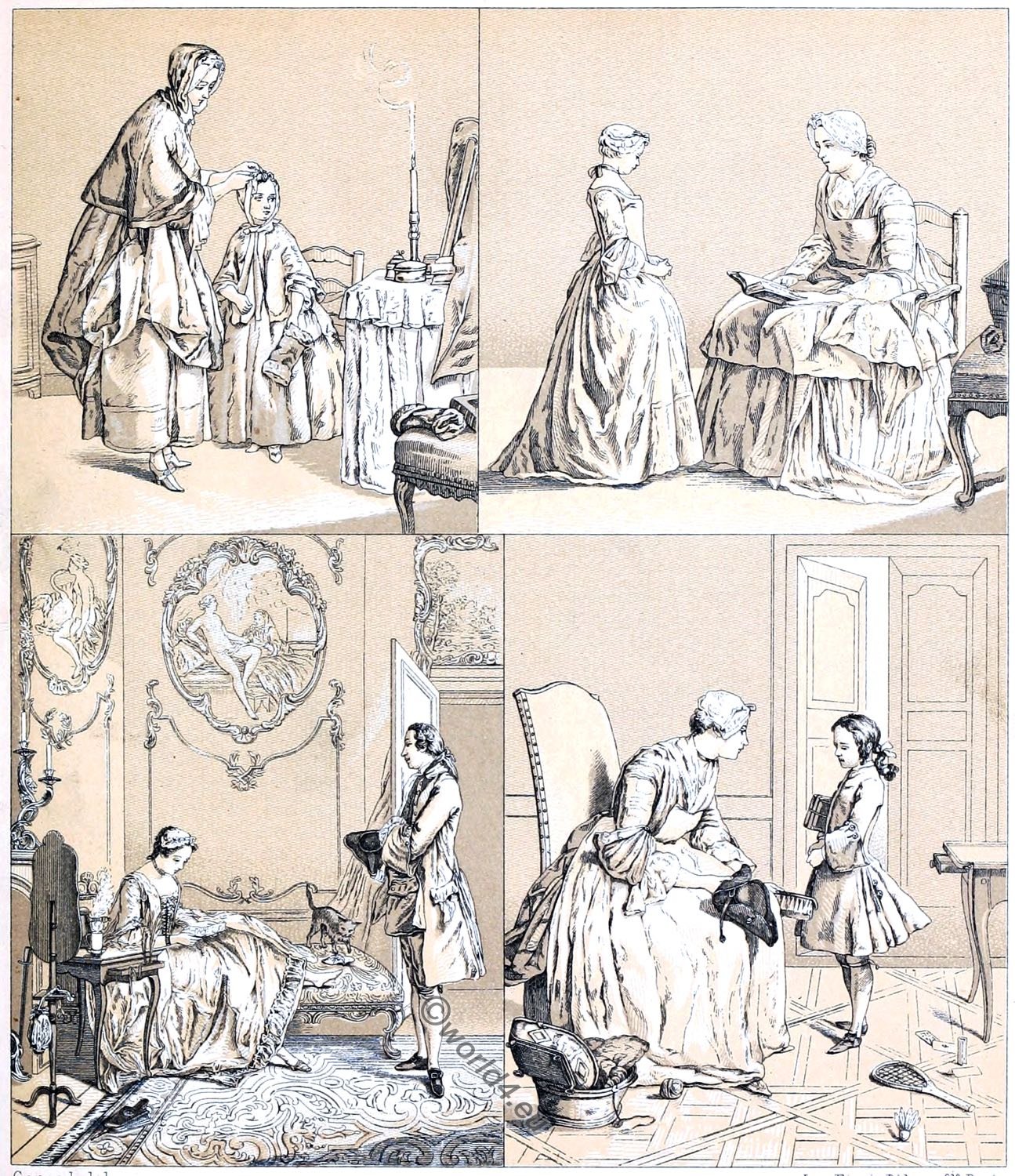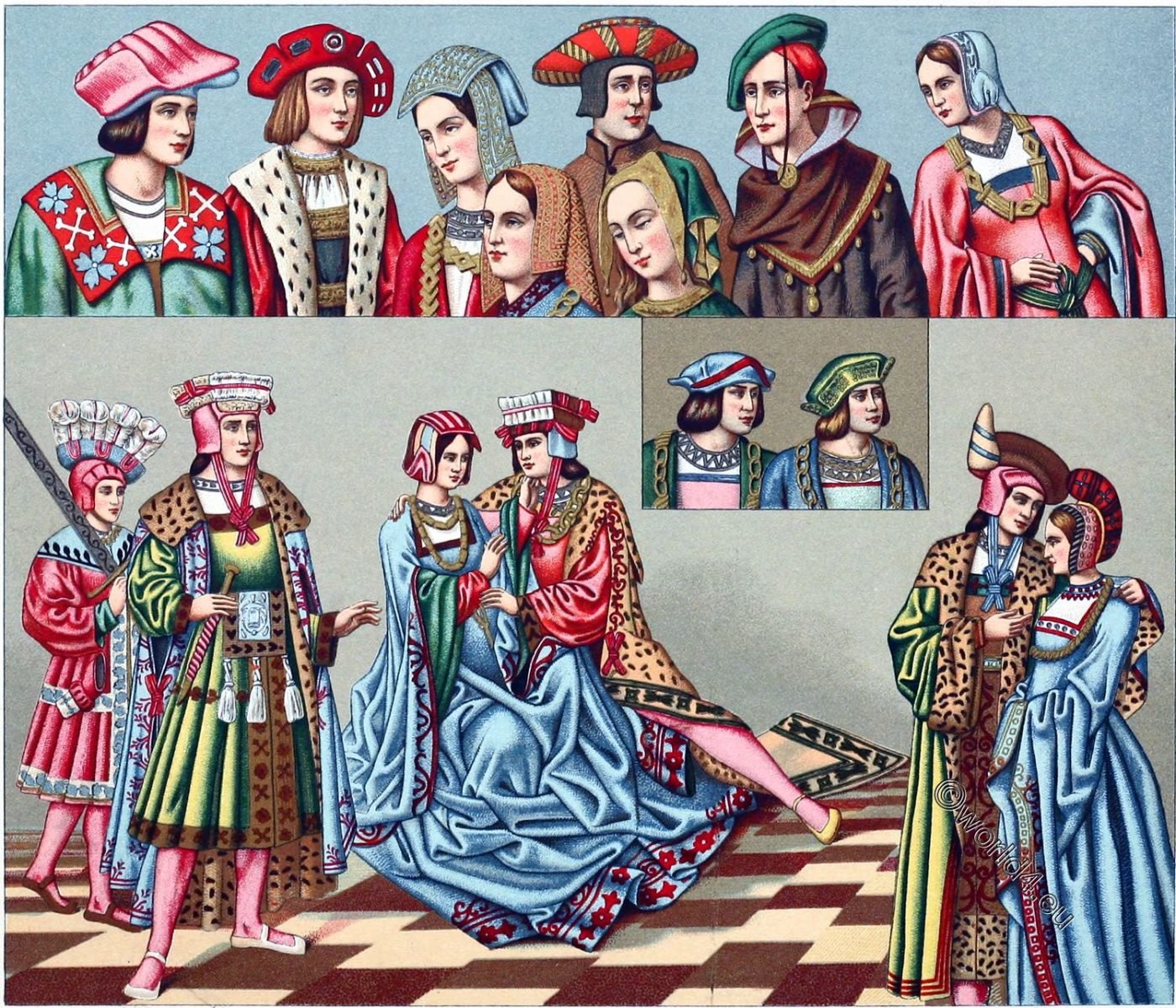
1, 2, 3, 4, 5, 6, 7, 8,
9, 10, 11, 12, 13, 14, 15, 16,

17, 18, 19, 20, 21, 22, 23,
24, 25, 26, 27, 28, 29, 30, 31,
FESTIVE COSTUME. LADIES’ OVERCOATS AND MEN’S COATS. MEN’S AND WOMEN’S HAIRSTYLE. 1485-1510.
EUROPA. XV. XVI. CENTURY
The overskirt, the surcotte, was the main piece of the female formal dress. Long and rich in fabric, with wide sleeves à la grand’garre and a square neckline, it was usually closed by a belt or a cord, the ends of which fell down at the front or the side.
The depicted hairstyles show several variations of the temporals, the gable,- or the French bonnet. No. 18 is the original type, enclosing the face with a row of large pearls. The other variations are: the temporal bonnet, covered with a piece of thick fabric which falls down at the back and is picked up again towards the front of the head (nos. 3 and 11); the piece of fabric falls straight down at the back without being picked up again (nos. 4, 6, 8, 24 and 30); finally the French bonnet with a turban (nos. 16, 19, 25, 28 and 29) or a crown of nobility (no. 22). Of Flemish origin are the headdresses No. 21, a cap with agraffe covering the crown, and No. 23, a metal ring to which a veil is attached.
The male costume has undergone a radical change since Charles VIII’s move to Italy. The doublet loses its collar and shows the shirt at the top; in contrast, the turned-over coat (houppelande) collar at the back extends to the middle of the back (nos. 10 and 21). The cap coat was worn without collar over the doublet (nos. 13 and 14).
Barretts and caps, worn plain or on top of each other, and hats served as headgear. No. 10 and 12 are cap-like, with the lapel falling forward; the shape of the barrette with small turned-up edges is shown by nos. 2, 13, 14, 15, 17, 20, 26 and 31; nos. 9 is decorated with feathers; nos. 5 and 9 wear the double headdress, barrette and cap on top of each other; they are of Flemish origin and belong more to the first half of the XVth century.
Italian jewellery came into fashion somewhat later; it replaced the Flemish jewellery that had been introduced into France through the mediation of the victorious Burgundian court. The heavy chains and clasps worn by the French nobility at the end of the XVth century show the last traces of this influence.
Illustrations after Flemish tapestries owned by Sir Richard Wallace and Dubouché in Limoges; nos. 5, 6, 7, 21, 22 and 23 after paintings of the XVth century. The fabrics and paintings were on display at the costume exhibition organised by the Union centrale in 1874 in the Champs-Élysées. Compare Costume du moyen âge, Bruxelles, 1847th Quicherat, Histoire du Costume en France – Viollet-le-Duc, Dictionnaire du mobilier.
The Calotte. The cotehardie. The houppelande, farthingales. Square-necked chemise. The gable hood. The French hood. Linen caps called coifs were worn under the fur cap, hood or hat. German women adopted hats like fashionable men’s baretts early in the century; these were worn over caps or cauls (colettes) made of netted cord over a silk lining. The high-necked chemise.
Source: History of the costume in chronological development by Albert Charles Auguste Racinet. Edited by Adolf Rosenberg. Berlin 1888.

